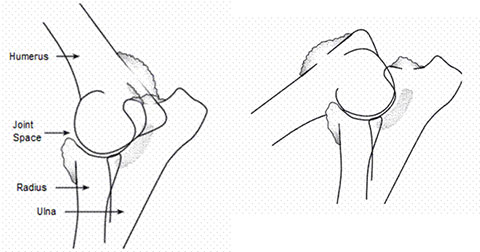
Many veterinary specialists are able to tell us what genetic defects are and how we can prevent them, namely not breeding with affected animals. That sounds very simple, but it isn’t. As for the Labrador retriever, we are talking about 111 (one hundred eleven) genetic defects, of which only a few are tested: several eye diseases like PRA and cataract, elbow dysplasia and hip dysplasia. If an animal is tested and no signs of genetic defects are found, a breeder may be quite sure that the offspring of this animal will not develop these genetic defects, especially when these genetic defects weren’t found in the parents of this animal either. However, if an animal is tested and signs of genetic defects are found, while this animal was born out of phenotypically unaffected parents, the breeder has a problem. Should he use this combination again, or should he stop breeding one or both parents, even when all the other puppies are phenotypically unaffected?
Nobody is perfect. No human being, no Labrador retriever is perfect. We may check for 4, 6 or 10 out of 111 genetic defects and a dog might prove to be phenotypically unaffected, but this can mean that the dog is a carrier of dozens of other genetic defects. With all the genetic and medical knowledge we have, science didn’t succeed in creating a human being without any genetic defects, let alone a Labrador retriever. All the programs invented to eliminate a genetic defect like canine hip dysplasia didn’t lead to the fact that we are now able to guarantee the production of Labrador Retrievers without hip dysplasia, or will be in the near future. So there are other facts to consider.
Some genotypic defects will never become phenotypical genetic defects, and some genetic defects will only become phenotypical in some animals, maybe even once in every 20 or 30 generations. Other genetic defects will only become phenotypical as a result of wrong exercise or wrong nutrition, especially during the first year of a puppy’s life. Thus it is possible that generations and generations of Labradors will be produced who are phenotypically free of hip dysplasia and elbow dysplasia, and will satisfy many, many buyers of Labrador Retrievers for their entire life, while other Labradors, from the same parents, but raised under less optimal environmental circumstances, will develop hip dysplasia or elbow dysplasia.
So if you want to be sure if your puppy has no genetic defect like hip dysplasia or elbow dysplasia, you could provoke these genetic defects by overfeeding and physically overstressing it during the first year of its life. However, most people realize that they didn’t buy a test automobile but a living animal and will not take the chance that a skeletal defect develops. They realize that “responsible ownership” includes taking good care of your puppy and preventing it from developing skeletal defects. Furthermore: breeders may claim that “incompetent use” of a puppy leads to the fact that they are no longer responsible for the quality of their “product”.
Some genetic traits have a high degree of heritability, while other genetic traits or defects, like hip dysplasia and elbow dysplasia, have a low degree of heritability. No serious breeder will breed a dog with phenotypical hip dysplasia or elbow dysplasia, unless he knows for sure that such a defect was caused by the wrong nutrition or wrong physical exercise (trauma) during the first year, that the parents and grandparents of this dog didn’t have the phenotypical defect, and that this dog is unique and important to the development of his breeding stock (or even to the breed as a whole). There are four major modes of inheritance that cause most of the defects in dogs: autosomal recessive, autosomal dominant, sex-linked recessive and polygenic.
PRA, for instance, are autosomal recessive traits.
- 1. Both parents are proven carriers, but generally show no phenotypic manifestation of the trait.
- 2. The trait tends to occur in one generation and then skips one or two generations until carrier descendants are again mated, allowing the genes to be expressed.
- 3. Males and females are affected equally.
- 4. Matings between carriers (heterozygotes) on the average produce 25% affected (homozygous recessive), 50% carriers (heterozygous) and 25% that do not have the mutant gene (homozygous dominant).
Some forms of epilepsy and deafness are autosomal dominant.
- 1. At least one parent of an affected offspring must show the trait.
- 2. The trait occurs in successive generations (no skipping).
- 3. Males and females are affected equally.
- 4. About 50% of the offspring of an affected parent will be affected.
(Hemophilia A (a bleeding disorder that slows the blood clotting process), for instance, is a sex-linked recessive defect.)
- 1. On the average half the male offspring of a carrier dam are affected.
- 2. On the average half the female offspring of a carrier dam are carriers.
- 3. The trait may skip generations.
- 4. The pattern of transmission is often called oblique, because the gene goes from phenotypically normal dams, to affected sons, and then to phenotypically normal carrier daughters.
- 5. Affected males transmit the gene to all of their daughters and to none of their sons, because the sons receive the Y- and not the X-chromosome.
- 6. If both parents are affected with the trait, all offspring are affected.
- 7. For an affected female offspring to emerge, the dam must be at least a carrier, and the sire must be affected with the trait.
- 8. Most affected offspring in a typical pedigree are male.
- 9. There may be related affected males on the maternal side of the pedigree, but only rarely (if ever) on the paternal side.
- 10. All male offspring of an affected female are affected with the trait when the sire is normal, and all daughters are phenotypically normal carriers.
These traits are more complex than the typical dominant or recessive genetic trait. The additive interaction of the genes can cause variable results and the gene can be easily passed on to other generations without being identified.
Canine hip dysplasia and elbow dysplasia are believed to be polygenic defects.
- 1. As with the recessive trait modafinil online, both the sire and the dam must contribute one or more of the genes that cause the abnormal phenotype in the offspring.
- 2. Unlike recessive traits, the contribution from the sire and dam need not to be equal.
- 3. Since we do not know the number or the specific effect of the genes involved in polygenic traits in dogs, no predictable Mendelian ratios are associated with these traits.
- 4. Both sexes are affected with polygenic traits (excluding sex-limited traits), but not necessarily in equal numbers.
- 5. The trait may skip generations and may appear to be erratic in occurrence.
Especially when it comes to polygenic defects it is hard to tell which one of the parents is mainly responsible for the defect in part of the offspring. It is throughout possible that the bitch and the sire are equally responsible, but it could be that the bitch’s part is 99, 5% and the sire’s part is 0, 5%, or the other way around. A breeder might exclude both animals from the breeding stock, but this could mean that he would exclude a valuable animal that would produce normal puppies if mated to another partner.
“Studies in dogs with HD have shown that HD may be a polygenetic disease, needing more abnormal genes to act together in expressing HD in the affected dog.” Science knows too little about genetic defects to be able to tell us breeders which dogs will produce offspring with genetic defects, and which will not. “DNA-screening tests have to be the future goal for the international kennel clubs and breeders associations”. Okay, so it is possible that one day a simple DNA screening test will tell us if a Labrador retriever is affected by one or more out of 111 genetic defects. But will it tell us something about the severity of these genetic defects? Let’s presume that all Labrador Retrievers carry the genes for hip dysplasia and elbow dysplasia. All of them. Let’s presume that all Labrador Retrievers have been doing so since the 1850’s. This would mean that these genetic defects can’t be eliminated. So what should we do then? Stop breeding Labradors and let the breed become extinct? Or rely once more on the mode of inheritance and degree of heritability, like we have been doing for more than 150 years? 150 years in which breeders of Labrador Retrievers provided millions of people with a lifetime friend, a unique dog, healthy on the outside but carrier of a gene that might pop up once in a while? Maybe even once in 80 years? Maybe we should just wait until there is a matured and reliable DNA test that is able to tell the breeder or buyer of a puppy what their chances are to get a phenotypically healthy puppy, even if it might carry the gene for a defect hidden deep down somewhere. And one thing is certain: no DNA test will ever be able to provide us with perfect Labradors, let alone perfect human beings. Because they do not exist and they never will.
Most Labradors are screened for hip dysplasia and elbow dysplasia between the age of one and two years. The results of these screenings are usually final, if the owner reconciles to the facts. To illustrate how “scientific” the screening results are: it is possible that an x-ray produces the result of (moderate bad hips) and that the same x-ray, examined by the same expert a few weeks later (probably in a better mood or with more time) produces the result of (excellent). Another disturbing fact is that most veterinary specialists, who examine x-rays without seeing the dog, are not (yet) able to tell the difference between dysplasia caused by genetic defects and dysplasia caused by trauma. So for a breeder it is rather difficult to trust the experts’ judgement. “Look at the whole dog”. When you see a completely healthy dog with all the traits you want to see in a Labrador retriever that is your starting point, because that is the phenotypical dog you want to reproduce. And as long as scientists aren’t able to tell us if this super dog produces 0.001 or 99.999% of the genetic defects, breeders have to rely on what the eye can see.
Sure, if it’s clear that my dog will transmit a serious genetic defect to his offspring, I will exclude that dog from the breeding program immediately. But what if the chance that this will happen with my dog is 0.001%? What if the chance that this will happen with all dogs is 0.001? Should I move on to breeding worms? If veterinary scientists want us to take them seriously, they should provide us with realistic and feasible prognostications. And in the cases they are not able to do so (yet), they should restrain from screaming blue murder or coming out with catchphrases.
A breeder is not liable for any genetic defect when he:
1. has done all he can to research the ancestors of his breeding stock, to make sure that these dogs didn’t have any serious genetic defects.
2. Had the parents of his puppies screened for serious genetic defects in the breed.
3. Has made sure that any signs of serious phenotypical defects in his breeding stock could only have been caused by environmental influences.
A purchase deed regarding to a puppy is usually not a contract in which the rights and the observance of duties of the buying side and the selling side are of equal standing.
Observance of the seller’s duties can be verified thoroughly, by health certificates, pedigree certificates, etc., but the only verifiable duty of the buyer is payment.
The buyer might say that he gave his puppy the right nutrition, the right amount of food, the right physical exercise, etc. but the seller is not able to verify the observance of these important conditions. Due to the fact that the right nutrition and the right exercise of a Labrador puppy during its first year can be of overriding importance regarding to the question if the puppy will develop a manifest genetic defect or not, in other words: to the fact that a phenotypically normal puppy may change into a phenotypically abnormal puppy, it is not advisable to include genetic matters in the purchase deed.
A breeder may guarantee the fact that a puppy is a pure-bred Labrador, descending from this sire and that dam. He may guarantee the fact that both the sire and the dam were phenotypically normal and healthy at the time of the mating and that the puppy was phenotypically normal and healthy at the time of deliverance. But no breeder can guarantee that a phenotypically normal Labrador puppy will not change into a phenotypically abnormal Labrador puppy, and no breeder can guarantee that the puppy will become a show champion, because all these matters are beyond his range of influence.
Pure research showed the important environmental influences on the occurrence of genetic defects during the first year of a puppy’s life. If a buyer of a puppy is not willing to take this risk, he should buy an adult Labrador and not a puppy.





